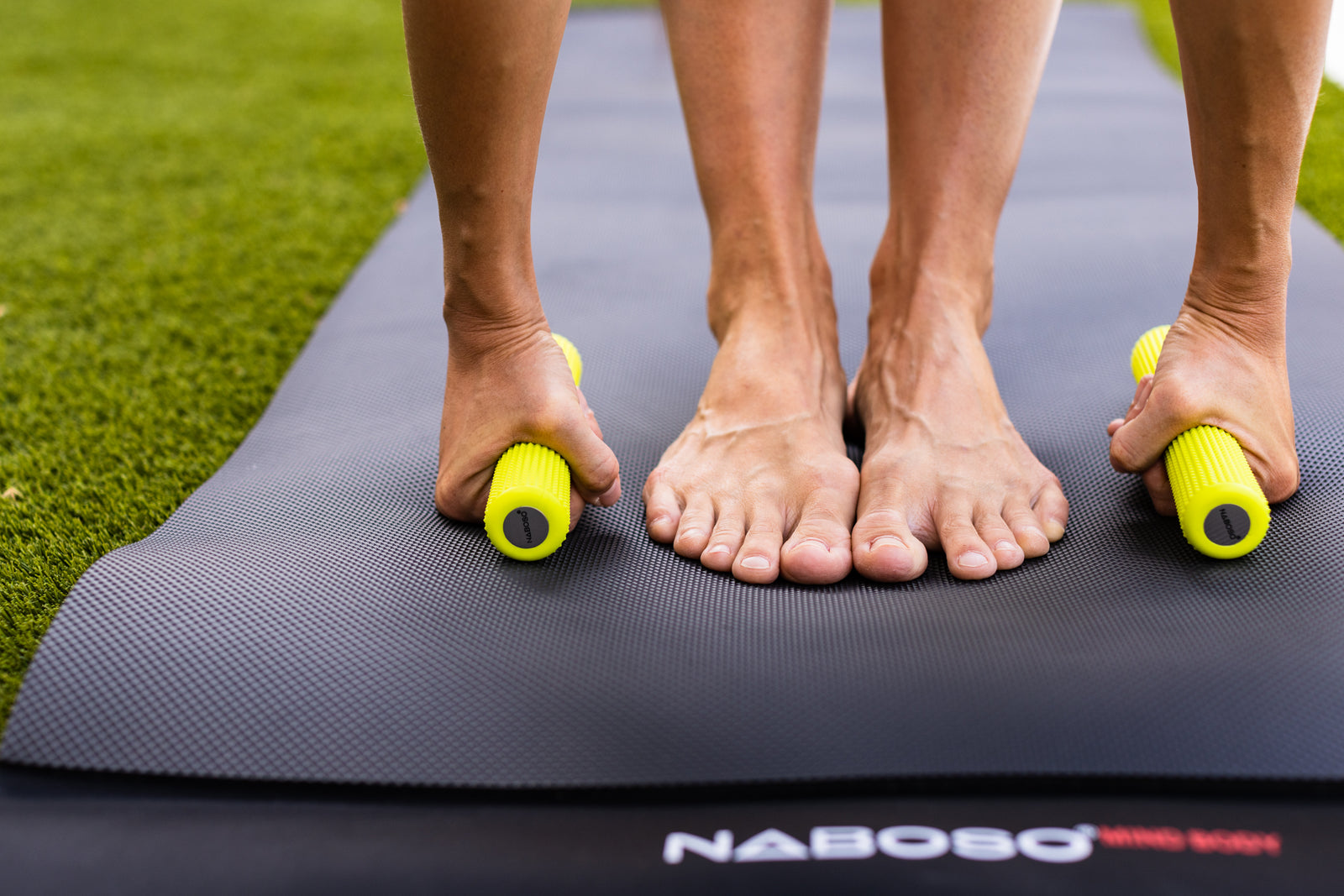Why Surfaces Matter for Posture & Movement

When it comes to foot health and movement it is well accepted to consider the impact of footwear and insoles, but what if I told you that the surfaces we move on matters just as much, if not maybe even more that the shoes we wear.
The Potential Energy of Impact
As the foot contacts a surface there is a period of gravitational free fall and acceleration leading to ground reaction forces. These impact forces, which are perceived as vibrations, are then used by the body as energy and as a way to move more efficiently.
The amount of vibration or energy created from foot contact is not the same on every surface. Some surfaces give a lot of energy, whereas other surfaces take away energy.
I like to say that there is a symbiotic relationship that is needed between the foot and the surface it is contacting. Imagine walking across the room, every time your foot contacts the ground, both the surface and your foot vibrate. Think of it like two cymbals striking each other and creating vibration.
The key thing to understand here is that not all surfaces vibrate well. Take concrete for an example.
Have you ever tried to jump or run on concrete? It's quite painful!
The reason is that there is not vibration energy created by this type of surface, and all the impact goes back into the foot.
The Ideal Surface
As surfaces vibrate and deform upon contact, the degree of vibration is dependent on the surface design, namely how hard the surface is or stiffness.
To support this theory is a review article by Marinsek et al. which found that the ideal mat for optimal landing techniques in elite gymnasts was actually stiffer or harder mats. When gymnasts landed on softer mats their landing technique was actually less accurate.
Marinsek et al. further emphasized the need for pre-activation muscle tension occurring up to 170ms before foot contact. This pre-activation response is supported by vibrations. This concept which is often research by Nigg et al. is a critical component to the teachings of Naboso founder Dr Emily Splichal.
Textured-Based Surfaces
Another feature of surface design that must be considered, especialy when it comes to barefoot training, is texture.
Texture perception is one of the stimuli unique to the small nerve proprioceptors of the plantar foot. A key thing to remember when it comes to texture is that not all texture is the same!
A 2011 study by Hatton et al. set out to find the most effective texture when it comes to improving proprioceptive feedback from the foot. Hatton et al. compared two different shapes and sizes of texture. What was fascinating is that pyramidal type textures improved balance and stability while dome like textures actually threw off balance!
It is important to note that the greatest improvement in balance with the Naboso-like texture was when the subjects eyes were closed. The reason for this observation is that when you take away one of the input systems (eyes, ears, joints, skin) the nervous system seeks out the other input systems. In this case it was the plantar foot that was over-recruited to maintain balance.
Application to Practice
To recap some of the features you want to look for in a surface especially when barefoot training or during barefoot sports include:
- Stiffness – to allow optimal vibrations
- Damping – to offset the excess vibration during dynamic movement
- Texture – to uniquely stimulate the small nerve proprioceptors in the plantar foot
Naboso and Surface Innovation
We are extremely proud to say that the Naboso Mats include all these surface science features. From the unique patented-texture on our mats to the Naboso Flooring, we are changing the way fitness, performance and rehab looks at surface science.
To learn more about Naboso or to order your Naboso Mat please visit www.naboso.com